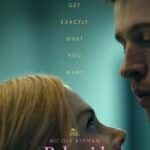
Blair wich
Over a decade later, Mary’s disappearance of Sister Heather in mysterious circumstances in October 1994, James Donahue and five other travel companions return to Burkittsville (former Blair) forest equipped with cameras hoping to find her alive And document everything. They will also measure them with the shadow of a legendary murderous witch lived two centuries before.
You can not enter twice in the same forest, the philosopher would have said, unless he resigned himself to being in two places that changed over time. At the gates of the third millennium, the beggars Daniel Myrick and Eduardo Sánchez had created a rather elementary and yet unprecedented artistic and commercial operation in the horror movie. The founder of The Blair Witch Project (1999) was less than a movie as a drama production and construction, and more than a movie about how it was made: to turn a fake documentary into a fictional fitting found footage of 16 mm. In which for about 90 minutes is given body to the ghost of vision is a coward but radical exercise of cinematic. The protagonists, who in the footsteps themselves interpret three students of the seventh art at Montgomery College, are prede only to the spectator whose imagination ends in a meal.
The cinema is dead, the cinema is alive. A peculiar trick to remind us that cinematic is a witchcraft, and that witch is us. A lesson to want to follow, which even risks becoming a scholar. A year later, in an attempt to replicate that success, Joe Berlinger assisted in writing by themselves. Myrick and Sánchez returned to the classical horror territories with the first sequel BW2 – The Secret Book of Witches. With seventeen-year-old backs, Adam Wingard and screenwriter Simon Barrett now sign a passive sequel that does not tickle and disagree, and has the inanimate nostalgia of a circular remake.
To make a difference this time, is the help of the latest technologies: a radio remote control drone, Gps, tablets, fixed HD camcorders and action cams positioned across the body that multiply angles and points of view. All this, in essence, in order to allow the director a plurality of machine movements that betrays, at least in the spirit, the subjectivity of the assimilation. With the aggravating pursuit of pure entertainment, do not center a jump-scare even because of the inappropriate support of sound design, so you have the impression that moving out of the box is a pachiderma instead of a witch.








